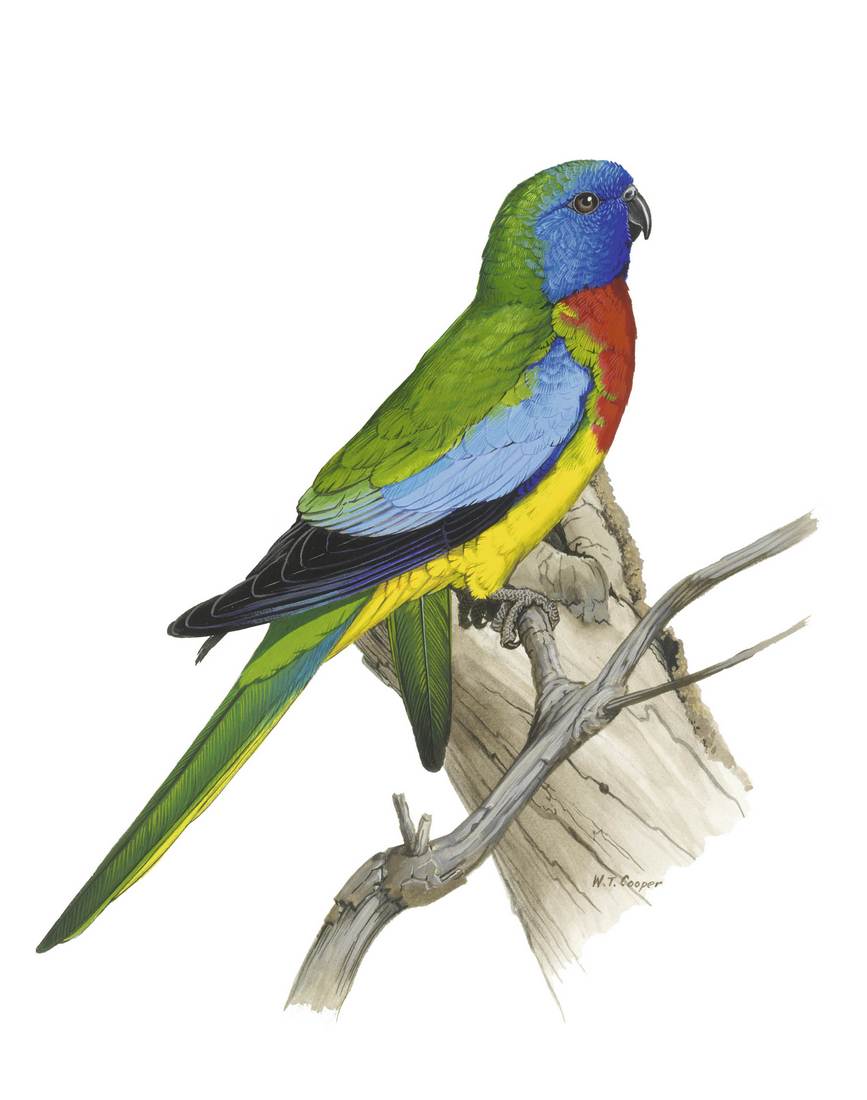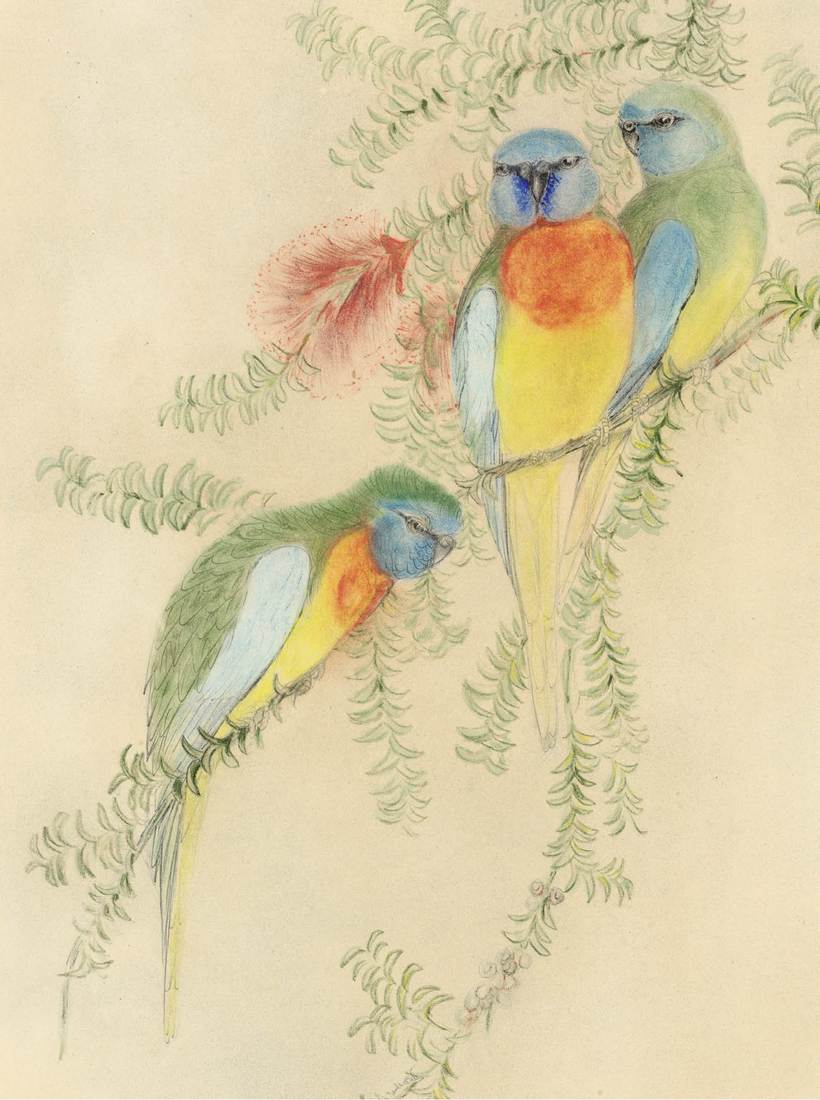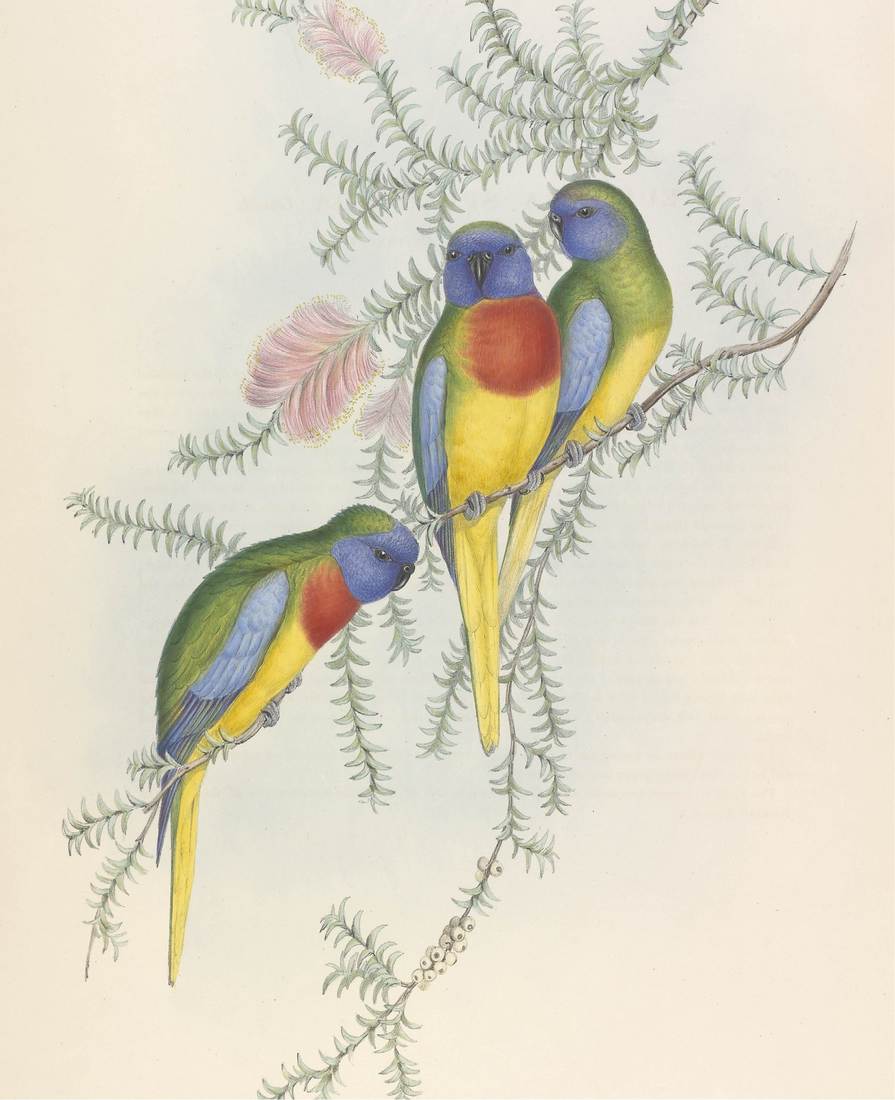Scarlet-chested Parrot
Neophema splendida
John Gould was the first to describe the species, in 1841.
Neophema combines the Greek neos (new or different) and euphema, a generic name no longer in use, derived from the Greek euphemos (auspicious or laudatory); splendida is from the Latin splendidus (splendid, brilliant or magnificent).

William T. Cooper, Scarlet-chested Parrot (Neophema splendida) 1970 (adult male)
Author’s note: The Scarlet-chested Parrot is highly nomadic and irruptive. In good seasons, its numbers can increase dramatically and disperse from its core range. In average to poor years, the population retreats, seemingly disappearing into arid southern Australia.

John Gould, Euphema splendida 1846
Author’s note: This illustration is the first known of the species.

John Gould (artist), Henry Constantine Richter (lithographer), Euphema splendida (Splendid Grass Parrakeet) 1848
(adult males, left and centre; adult female, right)
Author’s note: Although John Gould often gets credit for the beautiful illustrations in The Birds of Australia, he had a stable of fine artists, including his wife, Elizabeth. At the same time, Gould himself is often claimed to have had little artistic ability, which is demonstrably not the case. He designed and loosely, but capably, illustrated each species himself before handing over his work to his artists and lithographers.




